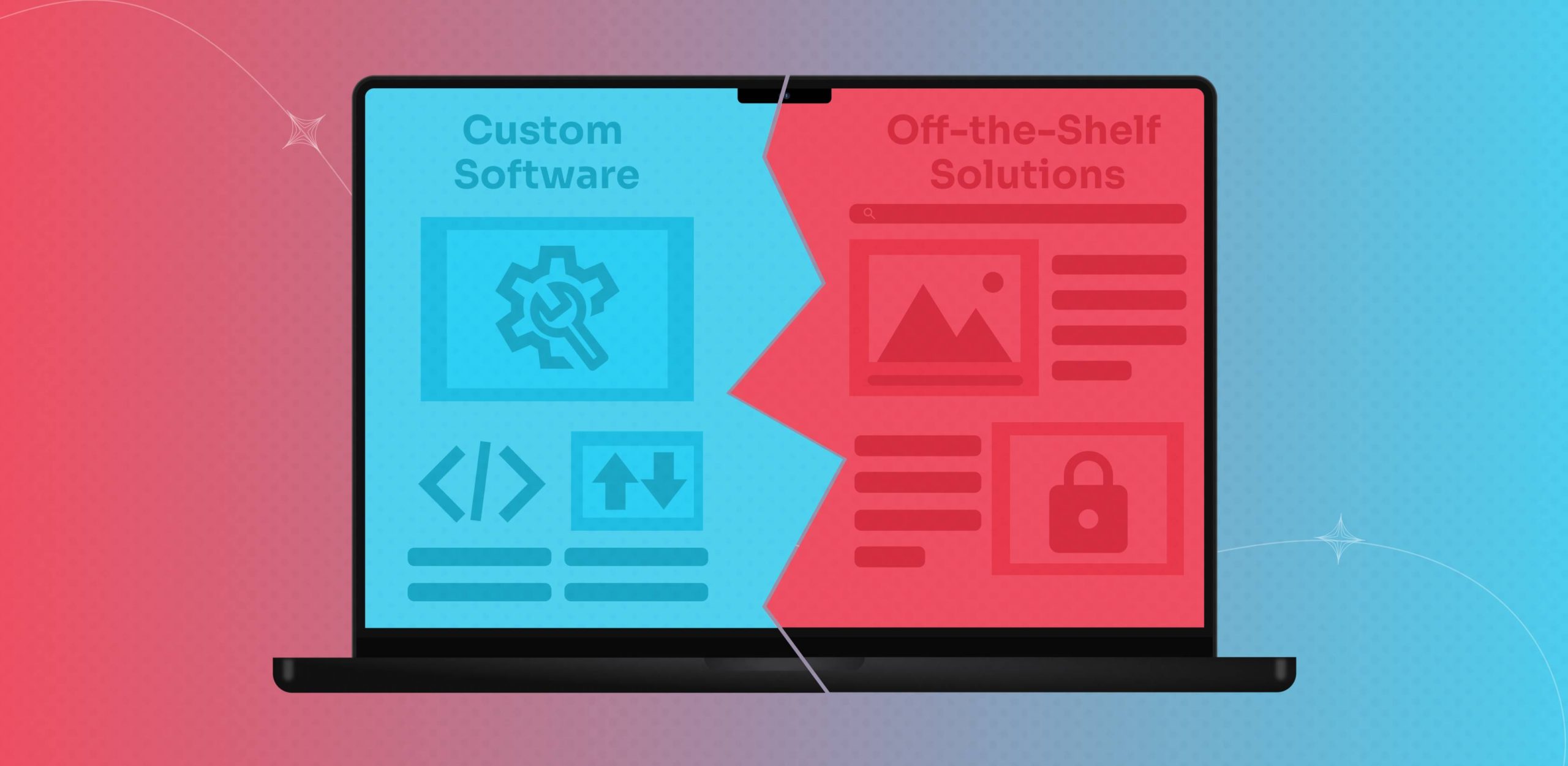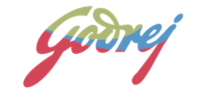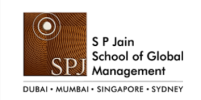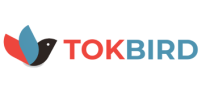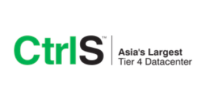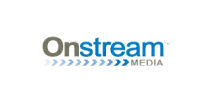SaaS application development has become a pivotal aspect of the modern digital landscape, offering a dominant model for delivering software solutions. As businesses increasingly seek scalable, cost-effective, and user-friendly software, the demand for SaaS application development has surged. This blog delves into the essential features, benefits, and best practices for successful SaaS application development, providing guidance on selecting the right SaaS application development company and exploring future trends in the industry.
What is SaaS Application Development?
SaaS application development refers to the process of creating cloud-based software applications that are accessible over the internet. Unlike traditional software, SaaS applications are hosted on remote servers and provided to users on a subscription basis. This model eliminates the need for extensive hardware, software maintenance, and complex installations, making it an attractive option for businesses of all sizes.
An Overview of SaaS Application Development in Market
The SaaS market has witnessed exponential growth over the past decade. According to industry reports, the global SaaS market is projected to reach $272.49 billion by 2028. This growth is driven by the increasing adoption of cloud computing, the need for remote work solutions, and the shift towards subscription-based business models. SaaS application development services are now a cornerstone of modern IT strategies, providing businesses with agility, flexibility, and the ability to scale quickly.
Benefits of Choosing SaaS Application Development for Business
SaaS application development offers a wealth of advantages for businesses across various industries. As organizations increasingly shift towards digital solutions, the SaaS model stands out for its efficiency, scalability, and convenience. Below, we delve into the key benefits that make SaaS a compelling choice for businesses looking to modernize their software infrastructure.
Cost-Effectiveness
One of the most significant advantages of SaaS application development is its cost-effectiveness. Traditional software solutions often require substantial upfront investments in hardware, servers, and software licenses. Additionally, ongoing costs for maintenance, upgrades, and IT personnel can strain a company’s budget. In contrast, SaaS operates on a subscription-based model, where businesses pay a recurring fee to access the software.
This subscription model eliminates the need for large capital expenditures, allowing companies to allocate resources more efficiently. Moreover, the predictable monthly or annual costs of SaaS services help businesses manage their budgets with greater accuracy. The cost savings are further enhanced as SaaS providers typically include maintenance, updates, and customer support in their subscription plans, reducing the need for in-house IT staff and infrastructure.
Scalability
SaaS applications are inherently scalable, providing businesses with the flexibility to adjust their usage according to demand. This scalability is particularly beneficial for companies experiencing growth or seasonal fluctuations in workload. With traditional software, scaling up often requires significant investments in additional hardware and software licenses. However, SaaS solutions can easily accommodate increased user numbers and data volumes without additional infrastructure.
This ability to scale on-demand ensures that businesses can respond quickly to changing market conditions, customer needs, or internal requirements. For example, a retail company can easily increase its SaaS application capacity during the holiday season to handle a surge in online transactions, and then scale back afterward. This flexibility not only optimizes operational efficiency but also provides a competitive edge in dynamic markets.
Accessibility
Accessibility is another cornerstone benefit of SaaS application development. Unlike traditional software that is often confined to specific devices or locations, SaaS applications are hosted in the cloud and accessible from any device with an internet connection. This ubiquitous access enables employees to work remotely, collaborate across geographies, and maintain productivity regardless of their physical location.
The rise of remote work and global teams has made this accessibility feature increasingly vital. SaaS applications often come with responsive designs and mobile-friendly interfaces, ensuring a seamless experience across desktops, laptops, tablets, and smartphones. As a result, employees can stay connected and productive, whether they’re in the office, at home, or on the go. This flexibility not only enhances employee satisfaction but also supports business continuity in various scenarios.
Automatic Updates
Maintaining and updating software can be a resource-intensive task, especially for businesses with limited IT capabilities. SaaS providers alleviate this burden by handling all software updates and maintenance. As a result, users automatically receive the latest features, enhancements, and security patches without any effort on their part.
This automatic update process ensures that the software is always up-to-date, secure, and compliant with the latest industry standards. It eliminates the downtime and disruption often associated with manual software updates, allowing businesses to focus on their core activities. Furthermore, SaaS providers typically roll out updates incrementally, minimizing the risk of compatibility issues and ensuring a smooth transition to new versions.
Customization and Integration
While SaaS applications are designed to serve a broad user base, many offer extensive customization options to meet specific business needs. Customizable features may include user interfaces, workflows, and reporting tools, allowing organizations to tailor the software to their unique processes and preferences. This level of customization ensures that the application aligns closely with business objectives and enhances overall efficiency.
In addition to customization, SaaS applications often provide robust integration capabilities. They can seamlessly connect with other software systems, such as CRM, ERP, and marketing automation tools, creating a unified digital ecosystem. This interoperability allows businesses to streamline workflows, eliminate data silos, and gain a comprehensive view of their operations. For example, integrating a SaaS CRM system with an email marketing platform enables automated customer segmentation and targeted campaigns, improving marketing effectiveness and customer engagement.
Essential Features for a Successful SaaS Application Development
To ensure the success of a SaaS application, it is critical to integrate several key features that enhance its functionality, usability, and security. These features not only improve the overall user experience but also ensure that the application can scale effectively as the business grows. Here are the essential features to consider:
User-Friendly Interface
A user-friendly interface is a cornerstone of any successful SaaS application. The design should be clean, intuitive, and responsive, focusing on providing an excellent user experience. A well-designed user interface (UI) ensures that users can easily navigate the application, find the features they need, and perform tasks efficiently.
To achieve this, developers should prioritize simplicity and clarity in design. The layout should be logical, with clear labeling and consistent navigation elements. Interactive elements, such as buttons and forms, should be easily distinguishable and provide immediate feedback when interacted with. Additionally, responsive design is crucial, ensuring that the application works seamlessly across various devices and screen sizes, from desktops to smartphones.
Robust Security
Security is a paramount concern in SaaS application development. Given that these applications often handle sensitive business data and personal information, it is essential to implement robust security measures. This includes using strong encryption protocols to protect data both in transit and at rest. Encryption ensures that even if data is intercepted, it remains unreadable without the appropriate decryption key.
Multi-factor authentication (MFA) adds an extra layer of security by requiring users to verify their identity through multiple methods, such as a password and a one-time code sent to their mobile device. Regular security audits and vulnerability assessments are also crucial to identify and address potential weaknesses in the system.
Compliance with relevant regulations, such as the General Data Protection Regulation (GDPR) or the Health Insurance Portability and Accountability Act (HIPAA), is another critical aspect of security. Ensuring compliance helps protect user data and builds trust with customers.
Scalability and Performance
A successful SaaS application must be able to scale efficiently to accommodate a growing number of users and increased data volume. Scalability ensures that the application can handle varying levels of demand without compromising performance.
To achieve scalability, the application’s architecture should be designed to support horizontal scaling, where additional resources can be added as needed. This often involves using cloud-based infrastructure and services, which provide flexibility and ease of scaling. Load balancing is another crucial component, distributing incoming traffic across multiple servers to prevent any single server from becoming overwhelmed.
Performance optimization is also key. This includes optimizing database queries, using efficient algorithms, and minimizing latency in data processing. A well-optimized application ensures fast load times and a smooth user experience, even under heavy load.
Multi-Tenancy
Multi-tenancy is a fundamental feature of SaaS applications, allowing multiple customers (tenants) to use the same application instance while keeping their data isolated and secure. This feature is essential for cost efficiency, as it enables resource sharing and reduces the need for separate infrastructure for each customer.
In a multi-tenant architecture, each tenant’s data and configurations are stored in separate databases or schemas, ensuring data privacy and security. This architecture also simplifies maintenance and updates, as changes can be deployed centrally without affecting individual tenants.
APIs and Integrations
Robust APIs (Application Programming Interfaces) and integrations are vital for enhancing the functionality and interoperability of a SaaS application. APIs allow the application to communicate with other software systems, enabling data exchange and integration with third-party services.
For businesses, the ability to integrate their SaaS application with other tools, such as CRM systems, accounting software, and communication platforms, is invaluable. This integration streamlines workflows, reduces manual data entry, and provides a unified view of business operations. Developers should ensure that APIs are well-documented, secure, and scalable to support seamless integrations.
Analytics and Reporting
Built-in analytics and reporting capabilities are essential for providing insights into the application’s usage and performance. These tools help businesses track key metrics, such as user engagement, feature adoption, and system performance, enabling data-driven decision-making.
Analytics dashboards should be customizable, allowing users to select and display the metrics most relevant to their needs. Advanced reporting features, such as data filtering, segmentation, and visualization, make it easier to analyze trends and identify areas for improvement. Real-time analytics can also provide immediate feedback on user interactions, helping businesses respond quickly to changes in user behavior.
Customization Options
While SaaS applications are designed to cater to a broad audience, providing customization options allows businesses to tailor the software to their specific needs. Customization can enhance user satisfaction and ensure that the application aligns closely with business processes.
Customization options may include configurable dashboards, user roles and permissions, workflow automation, and branding elements such as logos and color schemes. By allowing businesses to personalize their experience, SaaS providers can offer a more flexible and adaptable solution.
Reliable Customer Support
Reliable customer support is a crucial aspect of user satisfaction and retention. SaaS applications often involve complex features and workflows, and users may require assistance to navigate the system or resolve issues. Providing multiple support channels, such as live chat, email, and phone support, ensures that users can get help when needed.
In addition to responsive support, offering comprehensive documentation, tutorials, and FAQs can empower users to find answers independently. A well-structured knowledge base and community forums can also provide valuable resources for troubleshooting and learning.
Best Practices for SaaS Application Development
Adhering to best practices in SaaS application development is crucial for creating a robust, secure, and scalable application that meets market demands and satisfies users. Below are some key best practices to ensure the success of a SaaS application:
Agile Development Methodology
The agile development methodology is a cornerstone of modern software development, particularly in the context of SaaS applications. Agile emphasizes iterative progress, collaboration, and flexibility, allowing teams to develop and refine features incrementally. This approach offers several benefits:
- Iterative Development: By breaking down the development process into smaller, manageable cycles called sprints, teams can focus on developing specific features and functionalities. This allows for continuous improvement and quick adjustments based on user feedback or changing market conditions.
- Continuous Testing: Agile promotes the practice of continuous testing throughout the development process. This helps in identifying and fixing issues early, reducing the likelihood of major bugs or vulnerabilities being discovered late in the development cycle.
- Rapid Deployment: Agile facilitates rapid deployment of new features and updates. This is particularly important in the SaaS model, where users expect timely access to the latest functionalities and improvements.
- User Feedback Integration: Agile allows for frequent user feedback, enabling developers to align the application closely with user needs and preferences. This iterative approach ensures that the final product is user-centric and well-received in the market.
Focus on User Experience (UX)
User Experience (UX) design is critical in SaaS application development, as it directly impacts user satisfaction, retention, and overall success of the product. Prioritizing UX involves several key practices:
- User Research: Understanding the target audience is the first step in creating an intuitive and user-friendly application. Conducting surveys, interviews, and usability studies helps gather insights into user needs, behaviors, and pain points.
- Usability Testing: Regular usability testing allows developers to assess how easily users can navigate and interact with the application. This testing helps identify areas for improvement and ensures that the design is intuitive and accessible.
- Continuous UI/UX Improvement: The design of a SaaS application should not be static. It requires continuous refinement based on user feedback and changing trends. A/B testing, heatmaps, and user analytics are valuable tools for assessing and improving the user interface and experience.
- Accessibility Considerations: Ensuring that the application is accessible to all users, including those with disabilities, is an essential aspect of UX design. This includes implementing features like screen reader compatibility, keyboard navigation, and adjustable text sizes.
Data Security and Compliance
Security is a paramount concern in SaaS applications, given the sensitive nature of the data they often handle. Ensuring data security and compliance involves several critical practices:
- Encryption: Data should be encrypted both in transit and at rest to protect it from unauthorized access. This includes using strong encryption protocols such as SSL/TLS for data transmission and AES for data storage.
- Access Controls: Implementing robust access controls helps restrict access to sensitive data and functionalities. This includes role-based access control (RBAC), multi-factor authentication (MFA), and regular audits of access logs.
- Compliance with Regulations: Compliance with data protection regulations like GDPR, HIPAA, and CCPA is crucial for avoiding legal penalties and maintaining user trust. This involves implementing privacy policies, obtaining user consent for data collection, and ensuring data handling practices meet regulatory standards.
- Regular Security Assessments: Conducting regular security assessments, including penetration testing and vulnerability scans, helps identify and mitigate potential security risks. Keeping the application updated with the latest security patches is also essential.
Regular Updates and Maintenance
Maintaining a SaaS application requires a proactive approach to updates and maintenance. This ensures the application remains secure, functional, and aligned with user expectations:
- Feature Updates: Regularly introducing new features and enhancements keeps the application competitive and relevant. It also helps retain users by providing them with new tools and functionalities that improve their experience.
- Bug Fixes: Addressing bugs and issues promptly is crucial for maintaining user satisfaction. A well-defined process for tracking, prioritizing, and resolving bugs ensures that the application runs smoothly.
- Security Patches: As new security vulnerabilities are discovered, it is vital to implement security patches promptly. This helps protect the application from potential attacks and data breaches.
- Performance Monitoring: Continuous monitoring of the application’s performance, including load times, response times, and uptime, helps identify and resolve issues before they impact users. This ensures a seamless and reliable user experience.
Scalable Infrastructure
A scalable infrastructure is essential for accommodating growth and fluctuating user demands. Designing a scalable architecture from the outset involves several key considerations:
- Cloud Services: Utilizing cloud services provides the flexibility to scale resources up or down based on demand. Cloud providers offer a range of services, including computing power, storage, and databases, which can be easily adjusted as needed.
- Microservices Architecture: Microservices architecture involves breaking down the application into smaller, independent services that can be developed, deployed, and scaled individually. This approach enhances flexibility, fault isolation, and scalability.
- Containerization: Containerization, using technologies like Docker, allows for consistent deployment across different environments. Containers encapsulate an application and its dependencies, making it easier to scale, deploy, and manage.
- Load Balancing: Implementing load balancing ensures that incoming traffic is evenly distributed across multiple servers. This prevents any single server from becoming overwhelmed and helps maintain optimal performance and availability.
Contact us to learn how we can develop a customized solution that fits your goals.
How to Choose a SaaS Application Development Company?
Selecting the right SaaS application development company is a critical step in ensuring the success of your project. A well-chosen development partner can bring your vision to life, while a poor choice can lead to delays, cost overruns, and a subpar product. Here are some key factors to consider when choosing a SaaS application development company:
Experience and Expertise
Experience and expertise are paramount when selecting a SaaS application development company. Look for a company with a proven track record in SaaS application development. This means they should have substantial experience in building SaaS products, evident through their portfolio, case studies, and client testimonials. A company with a rich history of successful projects will likely have encountered and overcome various challenges, equipping them with the knowledge to handle your project efficiently.
- Portfolio: Examine the company’s portfolio to see the variety and complexity of projects they have handled. This will give you an idea of their capability to handle different types of SaaS applications.
- Case Studies: Review detailed case studies to understand how the company approaches problem-solving, project management, and client collaboration. Case studies often highlight specific challenges and how they were addressed.
- Client Testimonials: Client feedback can provide insights into the company’s reliability, professionalism, and ability to deliver on promises. Look for testimonials that speak to the company’s strengths and areas of improvement.
Technical Proficiency
The technical proficiency of the development team is another critical factor. SaaS application development requires a deep understanding of the latest technologies, frameworks, and tools. The company should have expertise in key areas such as:
- Cloud Computing: Proficiency in cloud platforms like AWS, Azure, or Google Cloud is essential for building scalable and reliable SaaS applications.
- Security Protocols: Strong knowledge of security best practices and protocols is crucial to protect sensitive data and ensure compliance with regulations.
- API Integrations: The ability to integrate with various third-party services and APIs enhances the functionality and usability of your SaaS application.
- Development Frameworks: Familiarity with modern development frameworks and languages, such as React, Angular, Node.js, and Python, ensures the application is built using robust and efficient technologies.
Customization Capabilities
No two businesses are the same, and your SaaS application should reflect your unique needs and goals. Ensure the company can provide customization options to tailor the SaaS application to your specific requirements. This includes:
- Understanding Your Needs: The development team should take the time to understand your business processes, challenges, and objectives. This ensures they can design a solution that aligns with your vision.
- Tailored Solutions: Look for a company that offers flexible and customizable solutions. They should be able to modify features, workflows, and interfaces to suit your needs.
- Scalability: The ability to scale the application as your business grows is crucial. Ensure the company designs the application with future growth in mind, allowing for easy addition of new features and handling increased user load.
Support and Maintenance
A reliable support and maintenance plan is essential for the long-term success of your SaaS application. Choose a company that offers comprehensive support services, including:
- Ongoing Support: The company should provide continuous support to address any issues or bugs that arise post-launch. This ensures that your application remains functional and efficient.
- Regular Updates: Regular updates and upgrades are crucial to keep the application secure and up-to-date with the latest technologies and features. The development partner should have a plan for rolling out updates without disrupting your business operations.
- Quick Issue Resolution: Timely resolution of issues is critical to maintaining user satisfaction. Ensure the company has a responsive support team that can address problems promptly.
Cost and Budget
Cost is an important factor, but it should not be the sole determinant in choosing a development partner. Consider the following:
- Transparent Pricing: Look for a company that offers transparent pricing with no hidden costs. A detailed proposal outlining the costs associated with each phase of the project will help you understand where your money is going.
- Value for Money: Ensure that the cost aligns with the value provided. The cheapest option may not always be the best, as it might compromise on quality and essential features.
- Flexible Payment Models: Some companies offer flexible payment models, such as milestone-based payments or subscription-based pricing, which can be more manageable for your budget.
Communication and Collaboration
Effective communication and collaboration are vital for a successful partnership. The development company should value transparency and be proactive in providing updates and seeking feedback. Key aspects include:
- Regular Updates: The company should keep you informed about the progress of the project through regular updates and meetings. This ensures that you are always aware of the status and any potential issues.
- Responsiveness: A responsive team that addresses your queries and concerns promptly fosters a positive working relationship and ensures that your needs are met in a timely manner.
- Collaboration Tools: The use of collaboration tools such as project management software, communication platforms, and shared documentation enhances the efficiency of the project and ensures everyone is on the same page.
Future Trends in SaaS Application Development
The SaaS (Software as a Service) landscape is constantly evolving, driven by technological advancements and changing user demands. Staying ahead of these trends is crucial for businesses looking to leverage SaaS solutions for competitive advantage. Here are some of the most significant trends shaping the future of SaaS application development:
Artificial Intelligence and Machine Learning
Artificial Intelligence (AI) and Machine Learning (ML) are revolutionizing SaaS applications by enabling advanced data analytics, automation, and personalized experiences. AI-driven predictive analytics helps businesses forecast trends and make data-driven decisions, while chatbots and virtual assistants provide efficient, around-the-clock customer support. Moreover, machine learning algorithms analyze user behavior to deliver tailored experiences, enhancing engagement and satisfaction. As AI and ML technologies continue to evolve, they are expected to play an even more significant role in optimizing SaaS applications, making them smarter and more responsive to user needs.
Mobile-First Approach
The mobile-first approach has become a critical trend in SaaS application development, driven by the widespread use of smartphones and tablets. This approach prioritizes optimizing software for mobile devices, ensuring seamless experiences across all platforms. Key elements include responsive design for adaptable interfaces, mobile-friendly features for intuitive navigation, and dedicated mobile apps that offer enhanced functionality and offline capabilities. As mobile devices increasingly become the primary access point for users, SaaS applications must be designed to provide a consistent and engaging experience, regardless of the device.
Microservices Architecture
Microservices architecture is transforming SaaS development by breaking down applications into smaller, independent services that can be developed, deployed, and scaled individually. This modularity enables faster development cycles, as different teams can work on separate services concurrently. The architecture also enhances scalability, allowing specific services to be scaled based on demand without affecting the entire application. Furthermore, microservices improve fault isolation, ensuring that issues in one service do not compromise the whole system. This approach is becoming increasingly popular for its flexibility, efficiency, and resilience in handling complex SaaS applications.
Security Enhancements
As cyber threats become more sophisticated, security enhancements in SaaS applications are paramount. Providers are adopting advanced encryption techniques to protect data both at rest and in transit, ensuring that sensitive information remains secure. Multi-factor authentication (MFA) adds an additional layer of protection, requiring multiple forms of verification before granting access. Continuous monitoring with AI-driven tools helps detect and respond to threats in real-time, proactively addressing vulnerabilities. These measures are crucial for maintaining user trust and compliance with regulatory standards, making security a top priority in the SaaS landscape.
Integration with IoT
The integration of SaaS applications with the Internet of Things (IoT) is expanding, creating new opportunities for data collection, real-time monitoring, and automation. IoT devices generate valuable data that SaaS platforms can analyze to improve decision-making and operational efficiency. For instance, in manufacturing, IoT sensors can monitor equipment performance and predict maintenance needs, reducing downtime. Additionally, SaaS applications can automate processes across connected devices, such as smart home systems, enhancing convenience and control for users. The synergy between IoT and SaaS is unlocking innovative solutions across various industries.
Customization and Personalization
The growing demand for customization and personalization in SaaS applications reflects businesses’ desire for solutions tailored to their specific needs. Customization allows companies to adjust workflows, dashboards, and features to align with their unique processes, enhancing efficiency and relevance. Personalization, driven by data analytics and AI, offers individualized user experiences, such as customized content and product recommendations. This trend extends to flexible pricing models, like pay-as-you-go and usage-based billing, making SaaS more accessible. As competition intensifies, providing tailored and personalized experiences is becoming essential for attracting and retaining users.
Conclusion
The future of SaaS application development is bright, with exciting trends that promise to enhance functionality, security, and user experience. As AI, mobile-first design, microservices architecture, IoT integration, and advanced security measures continue to evolve, SaaS providers and businesses must stay agile and innovative. By embracing these trends, businesses can leverage the full potential of SaaS solutions, driving growth and delivering exceptional value to their customers.
If you’re looking to develop or implement a custom SaaS application solution tailored to your business needs, we can help. Our team of experts specializes in creating scalable, secure, and user-friendly SaaS applications that align with your specific goals. Contact Enfin, your trusted SaaS app development company, today to discuss your project and discover how we can bring your vision to life. Let’s innovate and grow together!
Let’s transform your business for a change that matters.
F. A. Q.
Do you have additional questions?
What is SaaS application development?
SaaS application development involves creating cloud-based software applications accessible over the internet. These applications are hosted on remote servers and provided to users on a subscription basis, eliminating the need for traditional software installations and maintenance.
What are the main benefits of choosing SaaS application development for a business?
The primary benefits include cost-effectiveness, scalability, easy accessibility, automatic updates, and the ability to integrate and customize the software according to business needs.
How does a mobile-first approach benefit SaaS applications?
A mobile-first approach ensures that SaaS applications are optimized for mobile devices, providing users with a seamless experience across all platforms. This is crucial as mobile devices are often the primary access point for users, enhancing convenience and accessibility.
Why is microservices architecture important in SaaS development?
Microservices architecture breaks down an application into smaller, independent services, allowing for easier development, deployment, and scaling. This approach improves fault isolation and flexibility, making it ideal for complex SaaS applications.
What security measures are essential for SaaS applications?
Essential security measures include advanced encryption, multi-factor authentication, and continuous monitoring. These features help protect sensitive data, ensure compliance with regulations, and maintain user trust.
How can AI and ML enhance a SaaS application?
AI and ML can provide advanced analytics, automation, and personalized user experiences. They enable features like predictive analytics, chatbots, and personalized content, enhancing the functionality and value of SaaS applications.
What is the role of IoT in SaaS applications?
The integration of IoT with SaaS applications allows for data collection, real-time monitoring, and automation. This can improve operational efficiency, enable predictive maintenance, and provide enhanced control over connected devices.
How do customization and personalization improve SaaS applications?
Customization allows businesses to tailor SaaS applications to their specific needs, while personalization offers individualized experiences for users. These features enhance user satisfaction, engagement, and retention, making the application more relevant and effective.
What are the key factors to consider when choosing a SaaS application development company?
Key factors include the company’s experience and expertise in SaaS development, technical proficiency, customization capabilities, support and maintenance services, cost, and communication practices.
How can a business stay ahead of the trends in SaaS application development?
Businesses can stay ahead by continuously innovating and adopting new technologies such as AI, microservices architecture, and IoT. Staying informed about emerging trends, prioritizing security, and focusing on user experience are also crucial for maintaining a competitive edge in the SaaS market.





